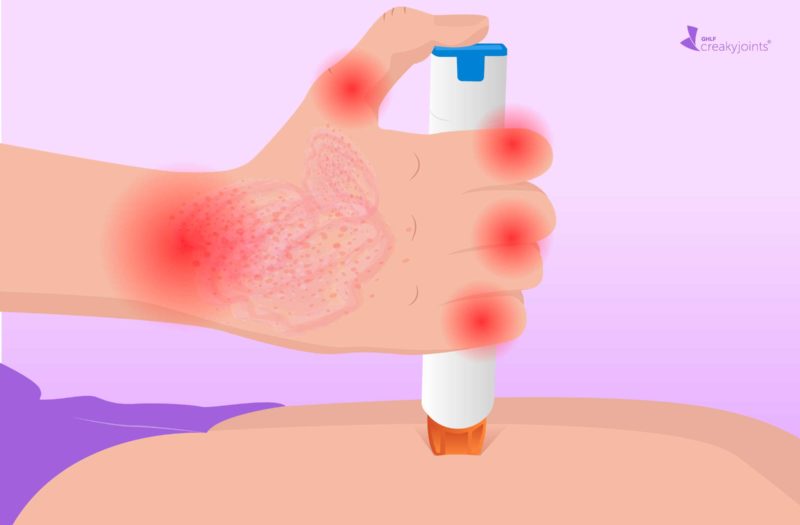Most people with moderate-to-severe psoriatic arthritis (PsA) are put on an oral drug like methotrexate and/or an injectable or infused biologic medication tumor necrosis factor (TNF) inhibitor like adalimumab (Humira) or infliximab (Remicade) to help manage symptoms and reduce disease activity. But in recent years interleukin-17 inhibitor medications like ixekizumab (Taltz) and secukinumab (Cosentyx) have been gaining traction as PsA treatment; some research even suggests that they might be more effective for PsA than TNF inhibitors.
Having more options is certainly good thing for people with PsA, especially if it means finding a therapy that enables you to reach remission or get close to it. What happens next, however, hasn’t been clear, especially if you’re using a newer IL-17 inhibitor. Once you reach your treatment target, lowering the dose or stopping completely might minimize your risk of side effects and save money. But would doing so leave you vulnerable to having your PsA flare up?
A new study attempted to answer that question, as the first large randomized double-blind trial to study what happens when you stop using an IL-17 inhibitor.
In an earlier stage of the study, which was published in the journal Arthritis & Rheumatology, 394 patients were given ixekizumab, and 40 percent of them (158 patients) achieved sustained minimal disease activity (MDA). This means they had very low PsA disease activity for at least three months.
Of that sustained MDA group, half were then randomly assigned to keep using ixekizumab; the other half were switched to a placebo.
According to the findings, PsA patients who stopped using ixekizumab lost their minimal disease activity status quicker than those who continued treatment. Additionally, 87 percent of patients who stopped treatment had disease relapse, compared to 38 percent of those who kept taking their medication.
But there was hope for patients whose psoriatic arthritis relapsed. On average, those in the withdrawal group were able to restore minimal disease activity in about four weeks and re-achieve it in about 16 weeks.
“These results indicate that continuous ixekizumab treatment is optimal for maintaining good disease control in PsA,” the authors wrote. “However, patients can regain disease control after retreatment with ixekizumab in case of interruption.”
This study was funded by Eli Lilly and Company, a manufacturer of Taltz. Eli Lilly is a corporate sponsor of the Global Healthy Living Foundation, but this content is editorially independent and is not sponsored by Pfizer.
Do You Struggle with Psoriatic Arthritis Fatigue?
Find out what causes fatigue in psoriatic arthritis, how it’s different from just being tired, and how to talk to your doctor about fatigue to start feeling better. Learn more and fight back against PsA fatigue.
Coates LC, et al. Withdrawing ixekizumab in patients with psoriatic arthritis who achieved minimal disease activity: results from a randomized, double-blind withdrawal study. Arthritis & Rheumatology. March 7, 2021. doi: https://doi.org/10.1002/art.41716.
Singh JA, et al. 2018 American College of Rheumatology/National Psoriasis Foundation Guideline for the Treatment of Psoriatic Arthritis. Arthritis & Rheumatology. January 2019. doi: https://doi.org/10.1002/art.40726.






